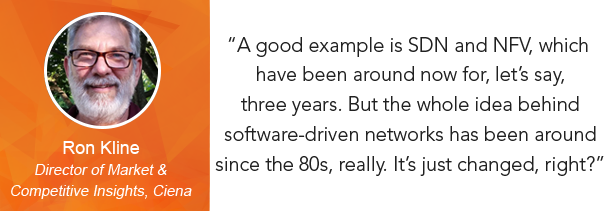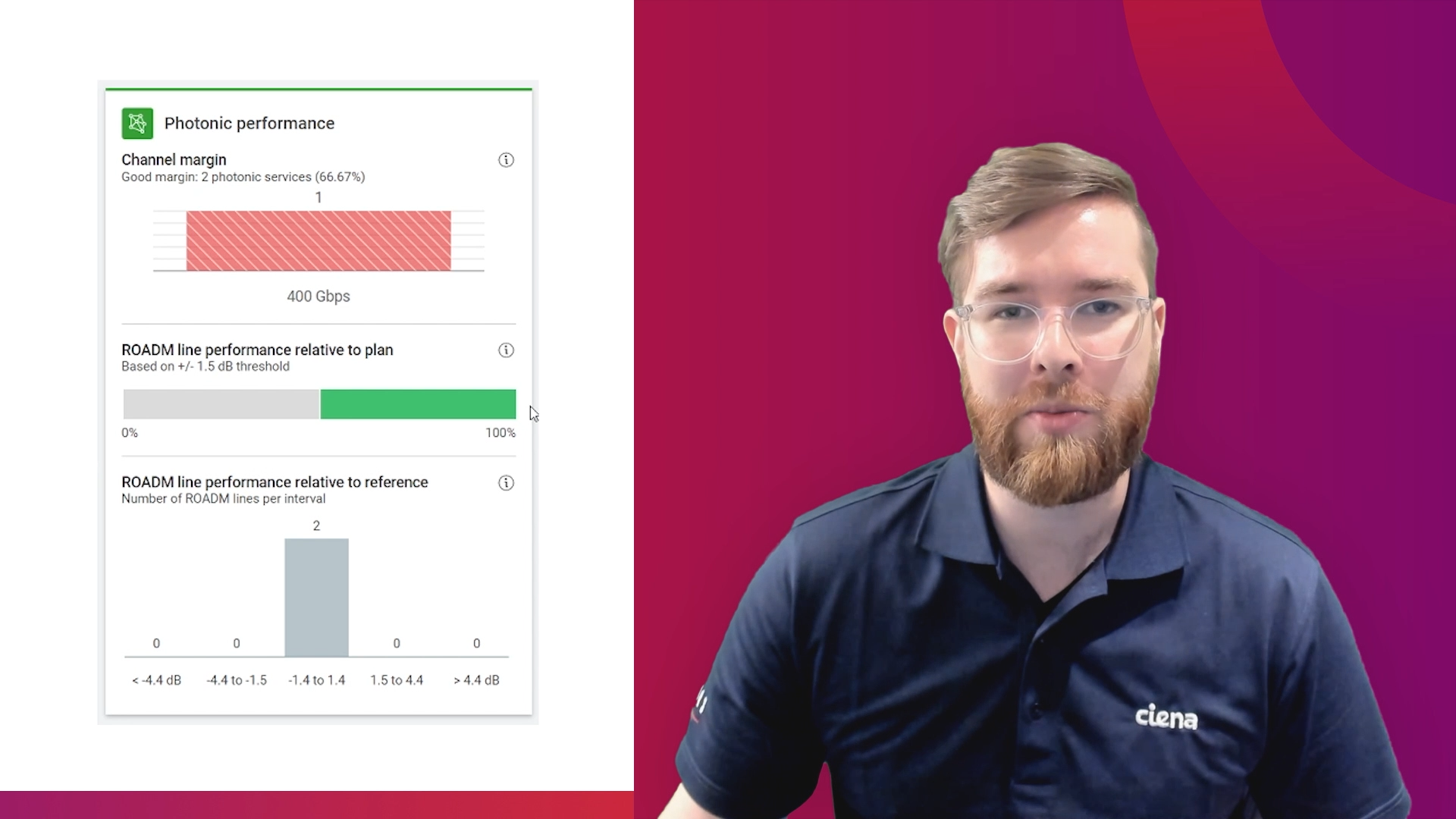Q&A with Ron Kline: Predicting the Pace of Change in our Industry
Change is a constant theme in the tech and telecom world, and one that Ron Kline has lived throughout his professional career. I recently had an opportunity to talk in-depth with Ron, who joined Ciena in June as Director of Market and Competitive Insights. Ron came on board following a stint as principal analyst at Ovum, where his brief centered on network infrastructures. Before that, he served for seven-and-a-half years as optical networks research director at RHK. In addition, he was a long-time senior member of the technical division at Bell Atlantic (now Verizon).
Ron’s experience over three decades has given him a deep perspective on the many factors that affect the pace of change in our industry and how companies must adapt. Click through for our conversation.
 Richard van der Draay is an Australian business journalist focusing on telecommunications, networking technology and cyber security.
Richard van der Draay is an Australian business journalist focusing on telecommunications, networking technology and cyber security.
Change is a constant theme in the tech and telecom world, and one that Ron Kline has lived throughout his professional career. I recently had an opportunity to talk in-depth with Ron, who joined Ciena in June as Director of Market and Competitive Insights. Ron came on board following a stint as principal analyst at Ovum, where his brief centered on network infrastructures. Before that, he served for seven-and-a-half years as optical networks research director at RHK. In addition, he was a long-time senior member of the technical division at Bell Atlantic (now Verizon).
Ron’s experience over three decades has given him a deep perspective on the many factors that affect the pace of change in our industry and how companies must adapt. Below is our conversation.
Q: How do you feel your background in market intelligence, as well as your unique experience in different industry roles, will help shape your focus in your new role as Director of Market Intelligence?
Ron: It’s actually what led me here. I started my career working for a service provider for 18 years and then moved over to the analyst community for 16 years. And, when I saw the position at Ciena, it was essentially the same role I was doing as an analyst.
But what’s different are the clients, so instead of having multiple clients, I [now] have customers that are internal-facing and different organisations within the company. The type of work that I do or have been doing is similar, very similar, but the outcome or rather the clients are different. It’s more geared towards being market driven. And in a marketing sense, [it’s more about] helping the company with its internal strategy. It’s sort of a different slant but actually from the viewpoint of doing what I do, it’s very similar.
Q: What single lesson from your days as an Ovum and RHK Research analyst do you think you will be absorbing into your new role?
Ron: I guess complacency. You have to be aware of change, which is often tough to see. Things move at a glacial pace in this industry, technology does take a long time to develop. We can be developing a certain technology for ten years, but being able to look forward and see ‘this is important and [this] change is coming’ and then how to manage that migration, I think that is part of being able to do that [successfully] in light of [the fact] that it takes so long to change.
A good example is SDN and NFV, which have been around now for, let’s say, three years. But the whole idea behind software-driven networks has been around since the 80s, really. It’s just changed, right?
So, you have that paradigm and OK, now we have SDN and NFV but how quickly do people move from the old paradigm to the new one? Some of our customers will move rather quickly and some will be laggards, so you have to be able to manage that transition both with your product set and your marketing.

Q: What should be the focus around research and market intelligence in terms of applying insights to new business projects and developing new products and services as part of a company’s go-to-market strategy?
Ron: We have to keep a good handle on the markets we’re in. How big are they? How are they transitioning? But the big key here is keeping your eye on the substitutes market that is developing. From that, you have this idea of virtualization and disaggregation that’s underlying the industry.
This will take many years to come to fulfilment but you can’t ignore the fact that these changes are occurring. You have to do both and I think that to me it’s almost a budget problem. Now we have to invest and learn to be on top of these new software and cloud-driven environments as services change, and as we delve deeper into our client base we have to support many more things.
For instance, it’s not only the technical change that’s hitting the telecom carriers. If you look at the vertical industries, the enterprise verticals; each one of those it hits in a different way. It’s important to understand how these changes are affecting how these companies are spending money into their networks.
Q: In the near term, what do you see as crucial for any networking vendor to gain the competitive edge, seeing how this industry – as are most these days – seems to be increasingly prone to disruption?
Ron: Software. The edge will be provided by software. As much as there is development on the hardware side that drives differentiation, that’s often short-lived. It’s not long before somebody else will copy or be able to develop the same technology. 100G is a good example. 100G or 200G, other vendors will catch up as you go.
Software is a bit different. It embeds you into your customers’ processes. It’s a little more ‘sticky’ in terms of being relied upon. At Ciena we have some really good orchestration products that will enable us to be in the middle of our customers’ businesses for many years to come.
It's not just [a matter of] putting in a network and providing some software to run the network; this is a much bigger piece. You’re not only providing software and hardware; you’re also helping them bring services to market, which is really the endgame for them and which is the key.






